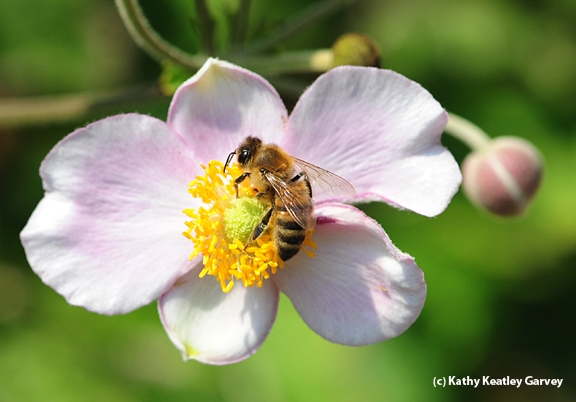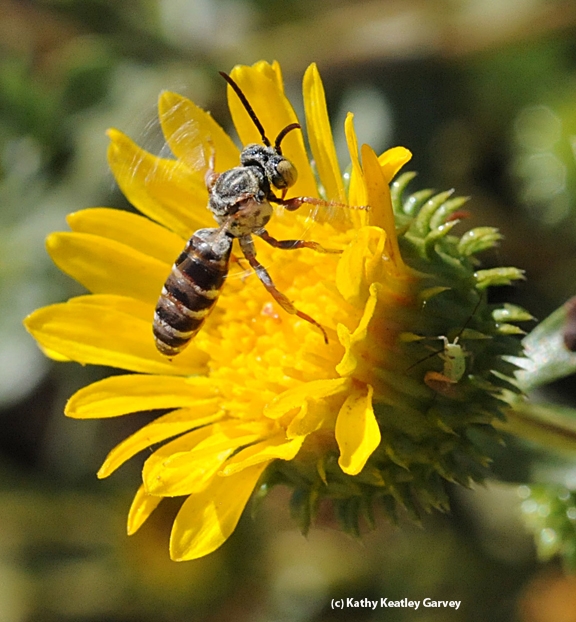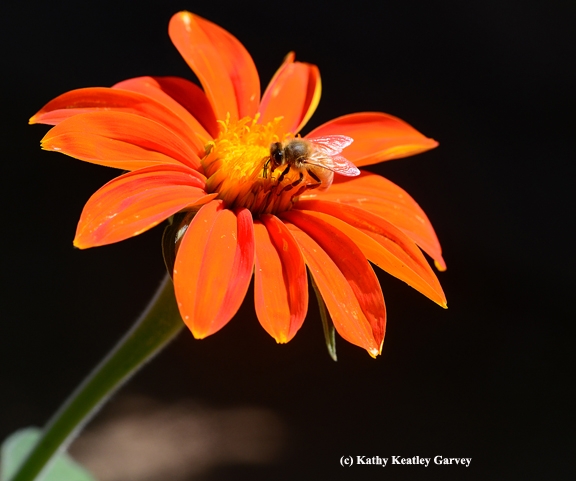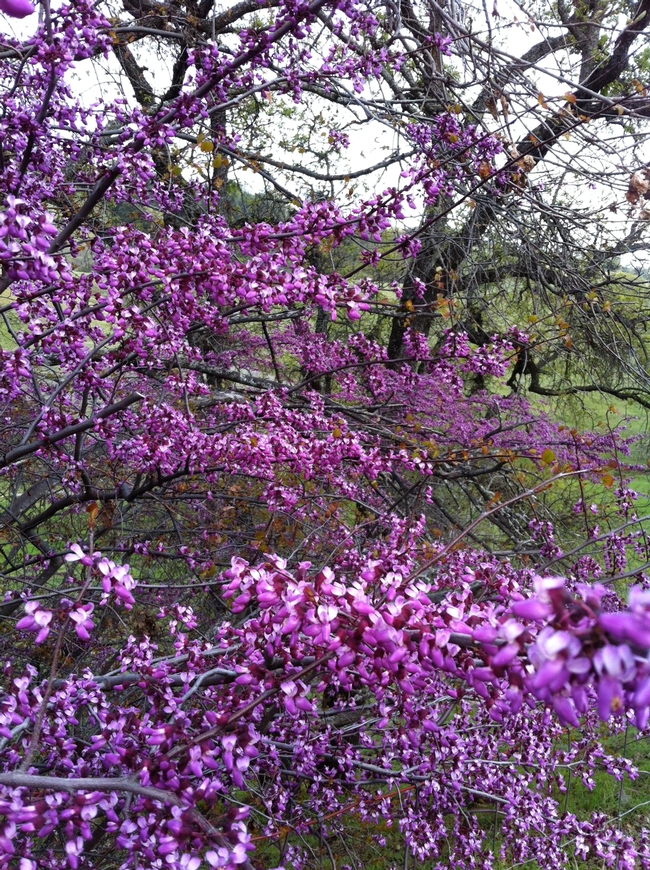Posts Tagged: drought-tolerant
Love the List
Bees and other pollinators may have a tough time during the fourth year of California's severe drought, as they search for nectar and pollen. Expect...

A honey bee foraging on anemone. (Photo by Kathy Keatley Garvey)

A cuckoo bee foraging on a gum plant. This insect is Triepeolus (maybe Epeolus), says native pollinator specialist Robbin Thorp, distingished emeritus professor of entomology at UC Davis. The little bug on the right appears to be a lygaeid bug nymph, according to Lynn Kimsey, director of the Bohart Museum of Entomology and professor of entomology at UC Davis. (Photo by Kathy Keatley Garvey)

The Mexican sunflower (Tithonia) is a drought-tolerant annual. (Photo by Kathy Keatley Garvey)
The California Stunner
As our dry winter continues, I feel the need to drag out my soapbox once again. Isn’t it time we got real about drought-tolerant landscaping? I am not advocating severe rock-and-cactus plantings. I’m suggesting some serious consideration of California native plantings.
March is the perfect month for us to take notice of the beauty of California native plants. Poppies and lupines are coloring hillsides all across the state. Manzanitas are dotted with tiny whitish blooms. Our stately blue oaks are budding out. Ceanothus is blooming cool blue from the coast to the foothills. And all this glory comes along without supplementary irrigation!
Have you noticed the other California stunner? The Western redbud (Cercis occidentalis) is dazzling right about now, its leafless branches covered in magenta blooms. You can see the shrubs along roadsides and freeways throughout Solano, Yolo and Sacramento counties. They’re particularly beautiful on the road to Lake Berryessa.
Now this is a native I can really get behind. It is easy to grow, though a bit slow. It’s not too picky about soil, but seems to be happiest on a well-drained, sunny hillside. It is deciduous, but with year-round interest (magenta blossoms now, burgundy heart-shaped leaves in spring, seedpods throughout winter). It can be trained into a smallish tree (8-20 feet), or left to its shrubby natural growth patterns. Not much bothers redbuds. The best part, in my opinion: Once a Western redbud is established in your landscape, it does not require extra irrigation. You might attain faster growth with occasional summer water, but the tree will do just fine without.
How cool is that?

Blooming stands of Western redbud can be found in March along Pleasants Valley Road in rural Vacaville. (photo by Kathy Thomas-Rico)

